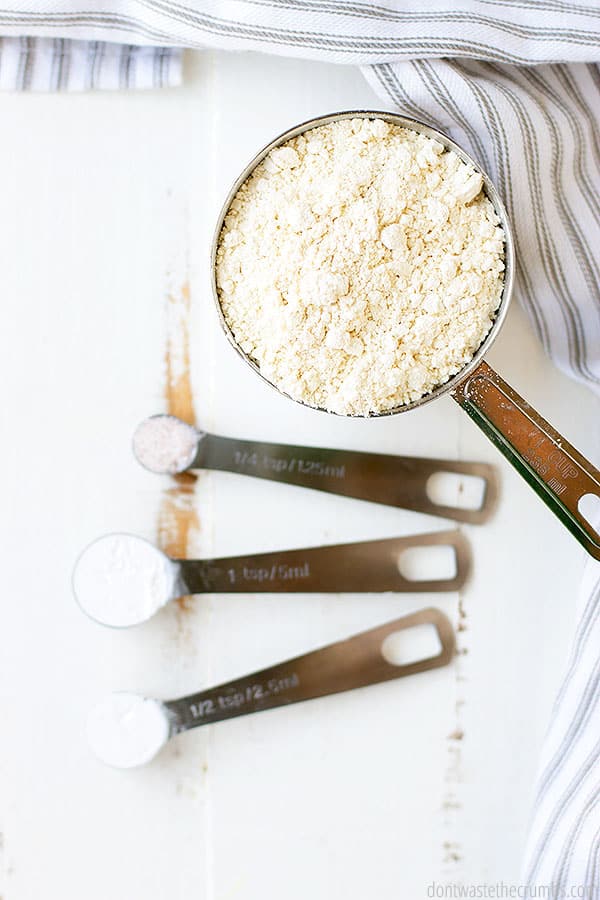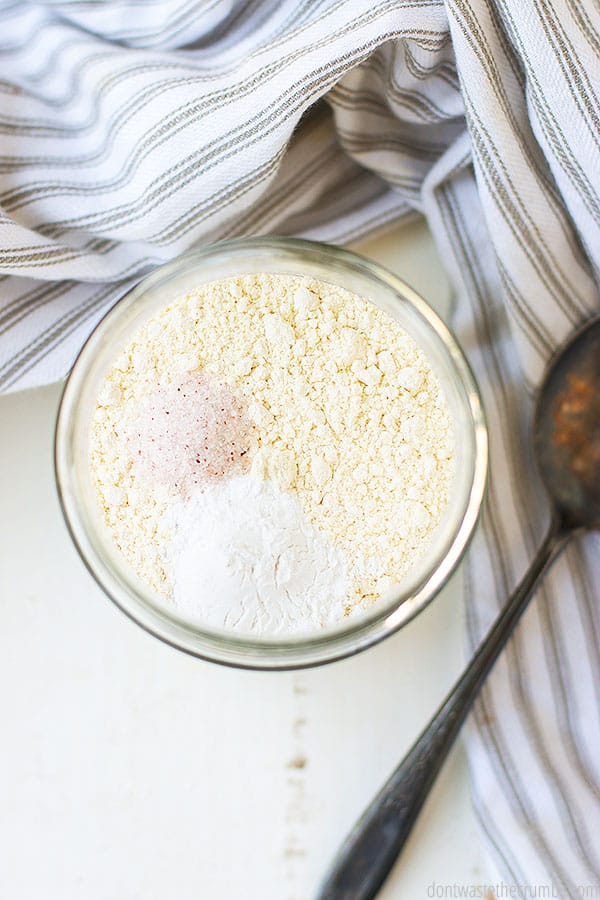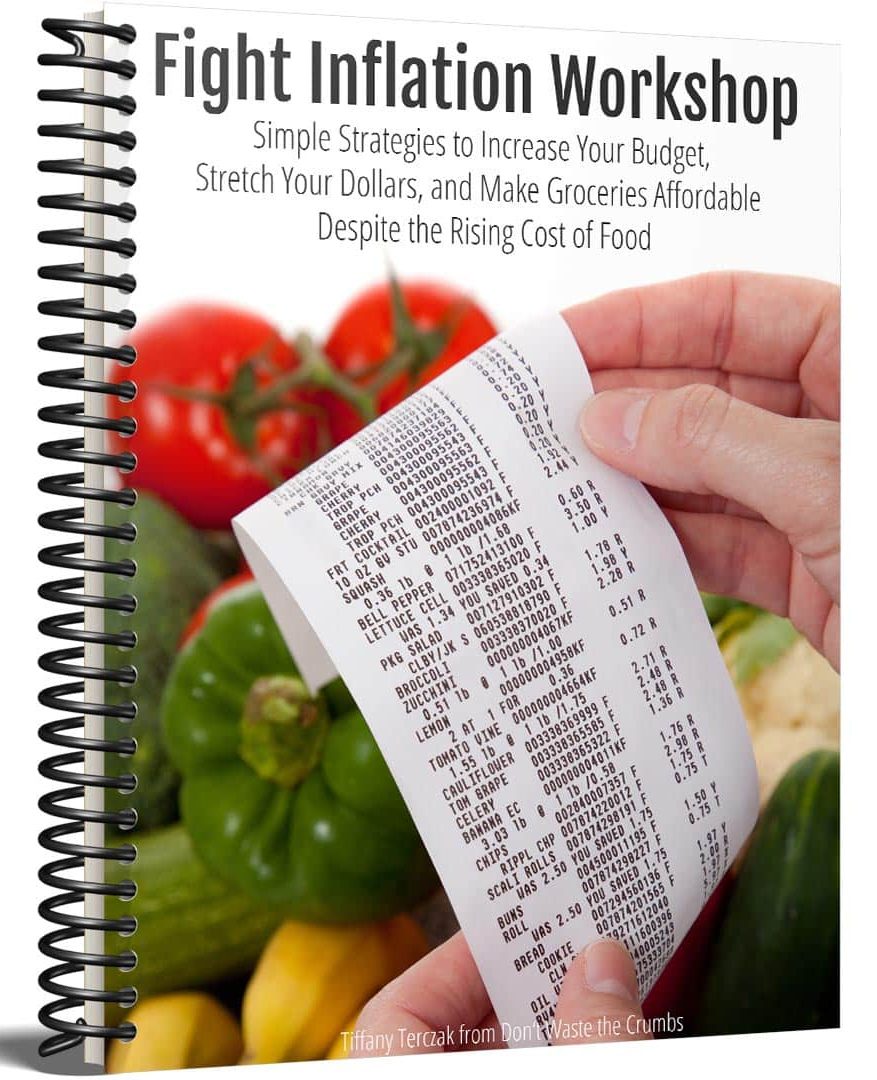Learn how to make self raising flour homemade in less than 5 minutes. Save time and money and skip running to the store – use just 3 common ingredients to mix up a quick batch!
Have you ever found a recipe that screams ‘PICK ME! PICK ME!,’ and when you read the list of ingredients, you realize that you:
- don’t have what you need
- need something you’ve never bought before
- have ZERO idea what else you’d do with this odd ingredient
This used to happen to me ALL THE TIME.
I’d find an amazing recipe that called for self raising flour and immediately feel defeat.
I normally don’t buy self raising flour, so I didn’t want to waste money on something I’ll never use again.
Thankfully, I now know how to make self raising flour using all-purpose flour from my pantry! And luckily for you, it’s super easy to learn how to make self raising flour too!
WHAT IS SELF RAISING FLOUR?
Before asking “How do you make self raising flour?”, you may be stuck at “What is self raising flour and why do I need it?”
Self raising flour (or self rising flour) isn’t a type of flour but a mixture of all-purpose flour, baking powder, and salt. By having your raising agent (baking powder) already mixed into your flour, you generally don’t need to add additional lifting agents to your recipe. It’s just a baking shortcut!
WHY MAKE SELF RISING FLOUR
Now that I know how to make self rising flour, and have done it several times for my 2-Ingredient Bagel Recipe, here are 4 reasons why YOU should consider making homemade self-rising flour substitute instead of buying the pre-made bags:
- Saves money. You ALREADY have everything you need to make self rising flour in your pantry!
- Convenience. It’s MUCH easier to measure out 3-4 ingredients than make yet another trip to the grocery store for “just one thing” (which, let’s be honest, you never leave with just that one thing!)
- Saves time. See tip #2 above. If I don’t have to go to the grocery store, that’s a time-saver in my book!
- You control the ingredients. The bags of store-bought self-rising flour are made with modern wheat, which is fine if you don’t have gluten allergies or sensitivities. If you do, being able to make self rising flour substitutes using einkorn (or any other grain you can tolerate) is a huge win!

WHAT IS IN SELF RAISING FLOUR?
You need just three simple ingredients to make this recipe for self raising flour:
Psst! Not all salts are made the same! I love Ava Jane’s Kitchen because it doesn’t have microplastics (gross, right?) and it’s SO GOOD! Plus, you can get a free 8oz. bag of sea salt (just pay shipping and handling!).
HOW TO MAKE SELF RISING FLOUR
In less than 60 seconds, here’s how to make self rising flour:
- Measure ingredients into a mixing bowl.
- Stir well with a whisk.
That’s it!

SELF RISING FLOUR STORAGE
If you make a larger batch of this self rising flour recipe, be sure to keep it in an airtight container in a dry place, and don’t forget the label! This self rising flour substitute should keep for up to 6 months. The baking powder will eventually lose some of its potency, so only make as much as you’ll use in that timeframe.

RECIPES USING SELF RAISING FLOUR
All of my yeast breads use either all-purpose flour or whole wheat flour or einkorn flour for the reasons I mentioned earlier – money, time, and convenience.
I don’t normally keep self raising flour on hand, because I hate to buy an ingredient I’ll only use in one recipe, and it’s MUCH easier to make smaller batches when I need it!
However, I always mix up a batch of self raising flour for my 2-Ingredient Bagel Recipe! You can also make Mini Bagels using self raising flour, which are fun for Breakfast Sandwiches or Mini Bagel Pizzas.
SELF RAISING FLOUR RECIPE FAQS
Can you make self-raising flour without baking powder?
Yes! I haven’t tested this myself, but you can make baking powder using cream of tartar and baking soda. To make one tablespoon of baking powder, mix 2 teaspoons of cream of tartar with 1 teaspoon of baking soda. From this, measure out what you need for this recipe for self raising flour!
How do you make self raising flour bread or biscuits?
All of my bread recipes use either all-purpose flour or whole wheat flour or einkorn flour for the reasons I mentioned earlier – money, time, and convenience.
I don’t normally keep self raising flour on hand, because I hate to buy an ingredient I’ll only use in one recipe, and it’s MUCH easier to make a small batch when I need it!
If you find a quick breads recipe or biscuit recipe using self raising flour, just make a batch of this homemade self raising flour recipe and use it as it’s called for in the recipe!
Is it okay to replace plain flour with self raising flour?
It depends. If your recipe calls for both flour and baking powder, you can use self raising flour in place of both ingredients. If your recipe doesn’t include baking powder or another leavening agent, skip the self raising flour and stick with regular flour instead.
MORE DIY HOMEMADE BAKING PANTRY STAPLE RECIPES

Fight Inflation Workshop!
Sign up for my FREE Fight Inflation Workshop and learn simple strategies to save money, even with rising food costs!
Self-Raising Flour
Learn how to make self raising flour homemade in less than 5 minutes. Save time and money and skip running to the store – use just 3 common ingredients to mix up a quick batch!
- Prep Time: 1 minute
- Cook Time: 0 minutes
- Total Time: 1 minute
- Yield: 1 cup 1x
- Category: Pantry
- Method: Baking
- Cuisine: American
Instructions
- Measure ingredients into a mixing bowl.
- Whisk together well before using in a recipe that calls for self-rising flour.
Notes
If you make a larger batch of this self rising flour recipe, be sure to keep it in an airtight container in a dry place, and don’t forget the label! This self rising flour substitute should keep for up to 6 months. The baking powder will eventually lose some of its potency, so only make as much as you’ll use in that timeframe.



